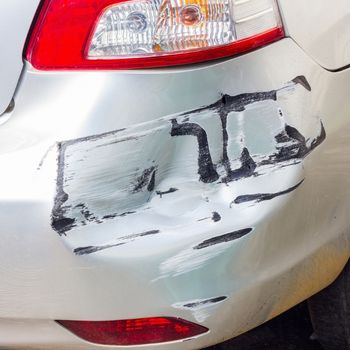 Nearly 2 million rear-end collisions occur each year, making them the most common type of car accident. Incidents range from fender-benders requiring mobile dent repair to more serious damage affecting the frame and body panels.
Nearly 2 million rear-end collisions occur each year, making them the most common type of car accident. Incidents range from fender-benders requiring mobile dent repair to more serious damage affecting the frame and body panels.
One aspect ties all types of rear-end collisions together: The amount of damage is not always apparent, particularly concerning the trunk. A vehicle that has just a few scratches or a small dent likely has an issue that affects the performance or throws off alignment.
Long term, these aspects can decrease the car’s crash protection, increase wear and tear and put you at risk for another, more serious accident. As you’re examining the trunk after a rear-end collision, here’s what you should know.
Issues with the Trunk Following a Rear-End Collision
Even a fender-bender requires more than a cursory inspection. After a rear-end collision, a frame issue may be affecting the trunk, which could turn into a safety concern. Potential issues include:
- The trunk doesn’t close correctly or all the way. The lightest collision can affect the frame and internal parts designed to keep the trunk closed. These factors can cause the trunk to fly open as you’re driving, obscure your rear view and cause its contents to fly out.
- Dents and moisture. Inward-facing dents can cause moisture to enter the trunk area, increasing risks for rust and mold.
- Difficulties opening the trunk. The seal and frame may be distorted or damaged in such a way that you can’t open the trunk with your key or the car’s release button. While you might get it open, poor alignment could mean the trunk doesn’t close properly, exposing your car and its contents to theft risks.
In addition to affecting some of your car’s most basic functions, these factors can decrease your car’s resale value.
How to Inspect Your Trunk Following a Rear-End Collision
Most people look primarily at the bumper following a rear-end collision, checking for any dents and making sure the part is intact. If you spot dents along the trunk, the rear of your car may have a frame bent out of shape or hardware that’s been damaged to some degree.
When assessing the trunk, you’re recommended to:
- Check for gaps and distortion around the trunk. You should still be able to open and close the door with ease and shouldn’t see any areas of separation or overlap among the metal.
- Look beneath the bumper at the rear of the vehicle. What seemed like a moderate tap could have pushed up the rear rails and trunk. This can indicate distortion to the frame and trunk, potentially leading to opening issues or allowing more moisture to enter. At the very least, this development can throw off your car’s alignment and requires correction.
If you were recently involved in a rear-end collision, have DaSilva’s Auto Body inspect the trunk and other parts to determine the full extent of damage. Our technicians will recommend auto body repairs and work with your insurance carrier. Contact us to schedule an appointment today.




